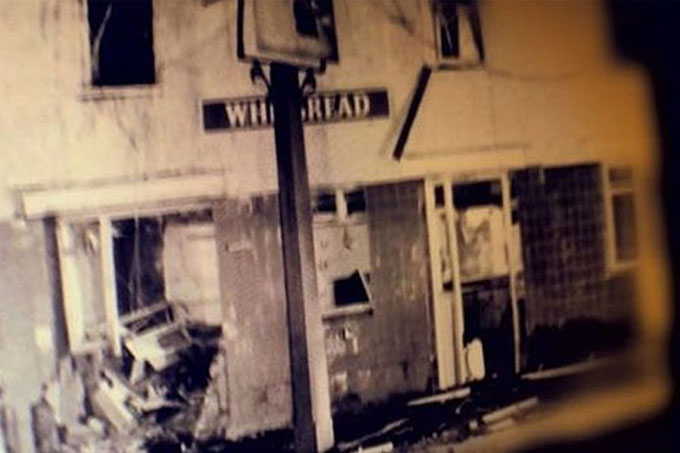In September 1975, forty years ago this week, the Northern Irish Troubles were experienced first-hand in the heart of Kent, when an IRA gang bombed a pub in Maidstone.
Dr Simon Prince, Senior Lecturer in the School of Humanities and an expert in the Troubles, gives his insight into the events that occurred that day:
Bombs exploding in the cities and towns of South East England. Machine gun attacks on hotels, restaurants and clubs. A former prime minister and a daughter of an American president escaping assassination. Terrorists faking their own deaths. A foot chase through London climaxing in a fatal shooting. An army officer getting killed while trying to disarm a bomb. Innocent men being fitted up by a police force under pressure from the media. Detectives jumping into cabs in hot pursuit of suspects through bustling West End streets. A four-day siege of a block of flats in front of the world’s television cameras.
What reads like the plot of a thriller about the hunt for an Islamist terror cell is actually a summary of the violent campaign waged by an IRA active service unit during 1974 and 1975. Sent over by Dublin Head Quarters, these elite IRA volunteers were tasked with bringing the war home to England. Their objective was to break the government’s will to keep fighting; their targets were members of the British army and the establishment.
Irish Republican theory, though, was difficult to put into English practice. According to declassified Special Branch reports held in the National Archives, the cell had been forced to study newspapers and yearbooks to work out who the establishment actually were. An even bigger problem than finding what to blow up was finding what it would take to break down people’s morale. As bombs once more exploded in London and the Home Counties, the spirit of the Blitz returned. Sandbags were again piled up outside buildings, businesses hit in the night found a way to open the next day, and people in and out of uniform put the lives of others ahead of their own.
On 25 September 1975, the everyday heroes were Mick Gray, a Kent police officer, and David Campbell, a teenage soldier out for a drink. The Hare and Hounds pub in Maidstone was popular with people from the nearby Royal Engineers barracks, and that was enough to make it a legitimate target for the IRA.
By September 1975, the active service unit had already bombed pubs in Guildford and Woolwich, killing a total of seven people. Aware that landlords and regulars in army towns were now alert to new faces and what they might leave behind, the IRA volunteers placed the bomb outside the pub. Campbell had come out of the pub hoping to catch someone who had forgotten their coat, but he instead caught sight of a holdall bag and remembered what he had learned serving in Northern Ireland. The alarm was raised, the police were called, the pub was emptied, the streets were cleared and neighbours were evacuated.
Gray was warning two people away from the area when the bomb went off. The force of the explosion lifted him off his feet and the shrapnel ripped through his flesh. His life was only saved by the notebook that protected his heart from the metal shards.
Three months later, the active service unit was run to ground by the Metropolitan Police in a dragnet operation that had flooded the capital’s streets with around 1,000 officers. The four men were charged with the Maidstone bombing, together with a host of other crimes, and were eventually given 47 life sentences. In 1998, as part of the Good Friday Agreement, they were released early from prison under licence.
Dr Simon Prince featured on BBC’s Inside Out South East programme on Monday 25 September, the 40th anniversary of the Maidstone bombing. Watch again (18mins 30secs): http://bbc.in/1YKMI8U.
 Expert comment
Expert comment holly finch
holly finch 2104
2104


